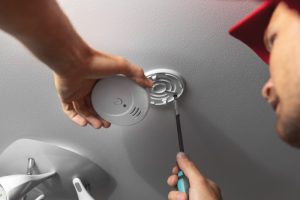A gas furnace has a lot of components. There are those that actually combust fuel and create heat, like the ignition assembly (or pilot light, in older furnaces) and the burner. There are those that get that hot air distributed, like the blower fan and its motor. But there’s something else as well: components whose job is to keep you safe!
There’s a flame sensor to make sure gas won’t be released if there’s no flame to burn it. There’s a limit switch that will shut down the system if it starts to overheat. There’s also something called a heat exchanger. It’s absolutely critical to both the functionality and the safety of your furnace! Here’s why.
Containing Gasses and Radiating Heat
When the burner combusts the natural gas (or other fuel, in the case of a propane or oil furnace) a lot of hot combustion gasses are created. That’s where the heat comes from. But it isn’t safe to allow those gasses to be released into your home. They go into the heat exchanger, a wavy-shaped component with a lot of surface area.
The hot gasses stay in, and fresh air passes around all that surface area. As that air makes contact with the heat exchanger, thermal radiation causes that air to heat up. It can then be pushed through the ducts by the blower fan, so it will flow out your vents and warm your whole house.
Carbon Monoxide
One of the most frightening risks of using any form of combustion, whether it’s in your car’s engine or in a fireplace, is that it will produce carbon monoxide. This gas is very dangerous to breathe and can cause headaches, dizziness, disorientation, vomiting, and even loss of consciousness, cardiac arrest, and death.
You’ve got to keep that carbon monoxide safely out of your air! And that’s exactly what the heat exchanger is. By keeping the gasses in and the fresh air out, heat can be created without any toxicity. The combustion gasses are then safely vented out of your home.
Cracked Heat Exchangers
The thing you need to be aware of is that heat exchangers can crack, and if they do, they’ll begin to leak carbon monoxide. They’re made of metal, and their entire purpose is to heat up and cool down over and over again. This means they’re forever expanding and contracting, and this makes the metal more brittle over time. Eventually, the metal may be brittle enough to crack.
How can you tell if you should be worrying about a cracked heat exchanger? Strange odors, clicking sounds when the system is cooling down, soot or moisture in the furnace cabinet, or a flame that flickers or is any color other than blue are warning signs. And if your carbon monoxide alarm goes off, you’ve definitely got a problem.
The best way to make sure this won’t happen to you is to be diligent about having maintenance done on your furnace each and every year. And if you have any reason to suspect you might need gas furnace repair in Boston, MA, get it taken care of promptly. It could save your life.
Reach out to Cooling Unlimited, Inc. to speak with qualified heating experts.


